Wow. I haven't milled anything since fall 2020. The pandemic, moving during the pandemic, and life's hassles.
Milling is currently a 2 step process for me:
- Crack the grain in a hand-crank 3-roller Shule brand mill.
- Run the cracked grain through a Vitamix blender for 30 seconds.
If I don't crack the grain first, the grain scratches and clouds the plastic container, takes longer to grind, and heats up more.
You can see the Shule "mill" in this other person's blog page:
https://seedforsecurity.com/blog/79
in the first photo. The Shule is the pink box on the left. And it's the mill featured in the 4th photo. Again, that page is not mine. I'm just using it as reference.
Here's the same mill at Amazon, where it goes by the name Norpro:
https://www.amazon.com/Norpro-1056-Grain-Grinder/dp/B001FB59K4
Label from bag: (purchased from www.countrylifefoods.com )
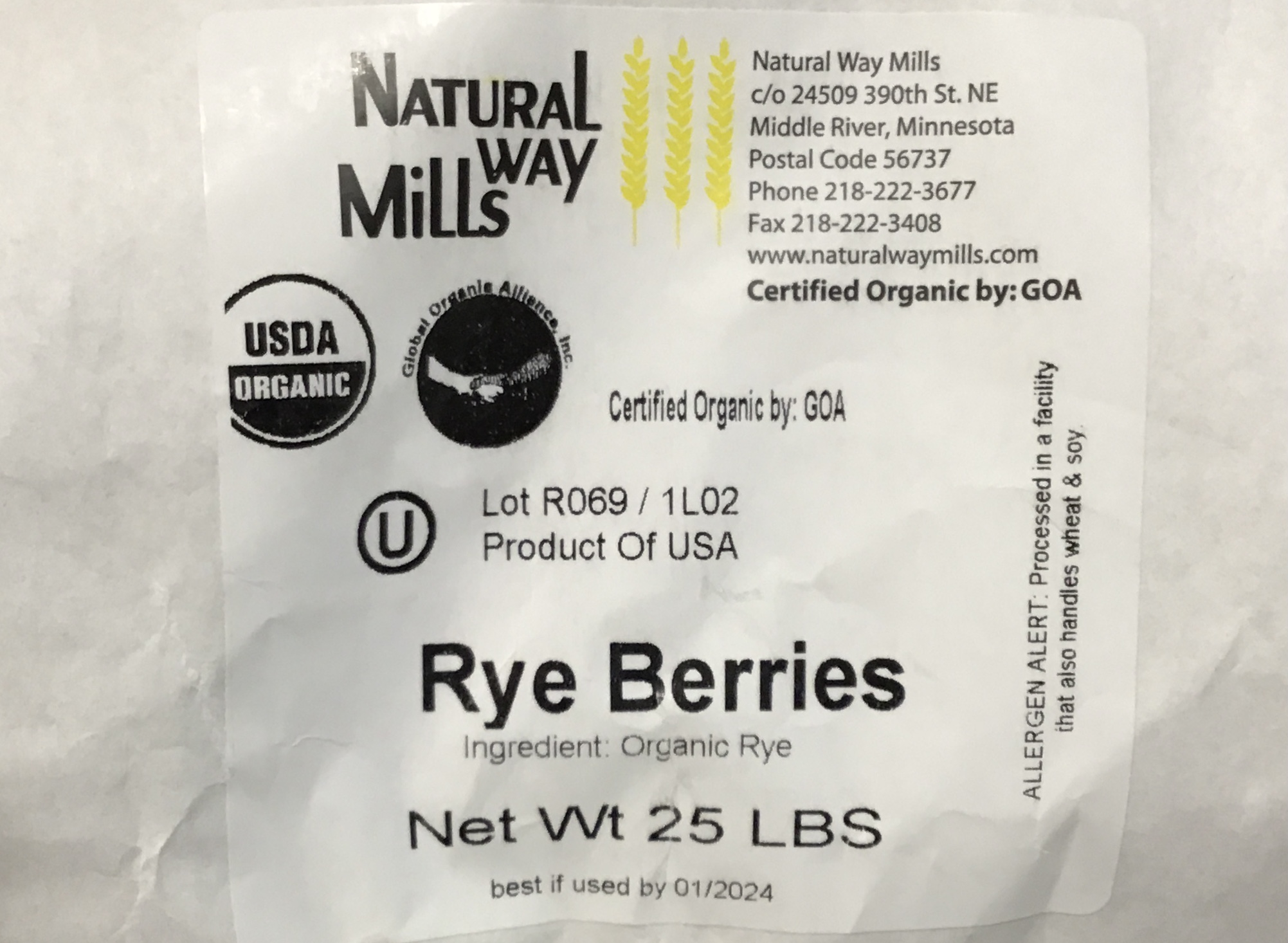
Here's the output of the 3-roller mill in a bag. I think I used setting "1." (Don't hold me to that. I won't be able to verify until the next time I mill, as I might have changed the setting when I cleaned it.) The fines and smaller particles settle to the bottom:
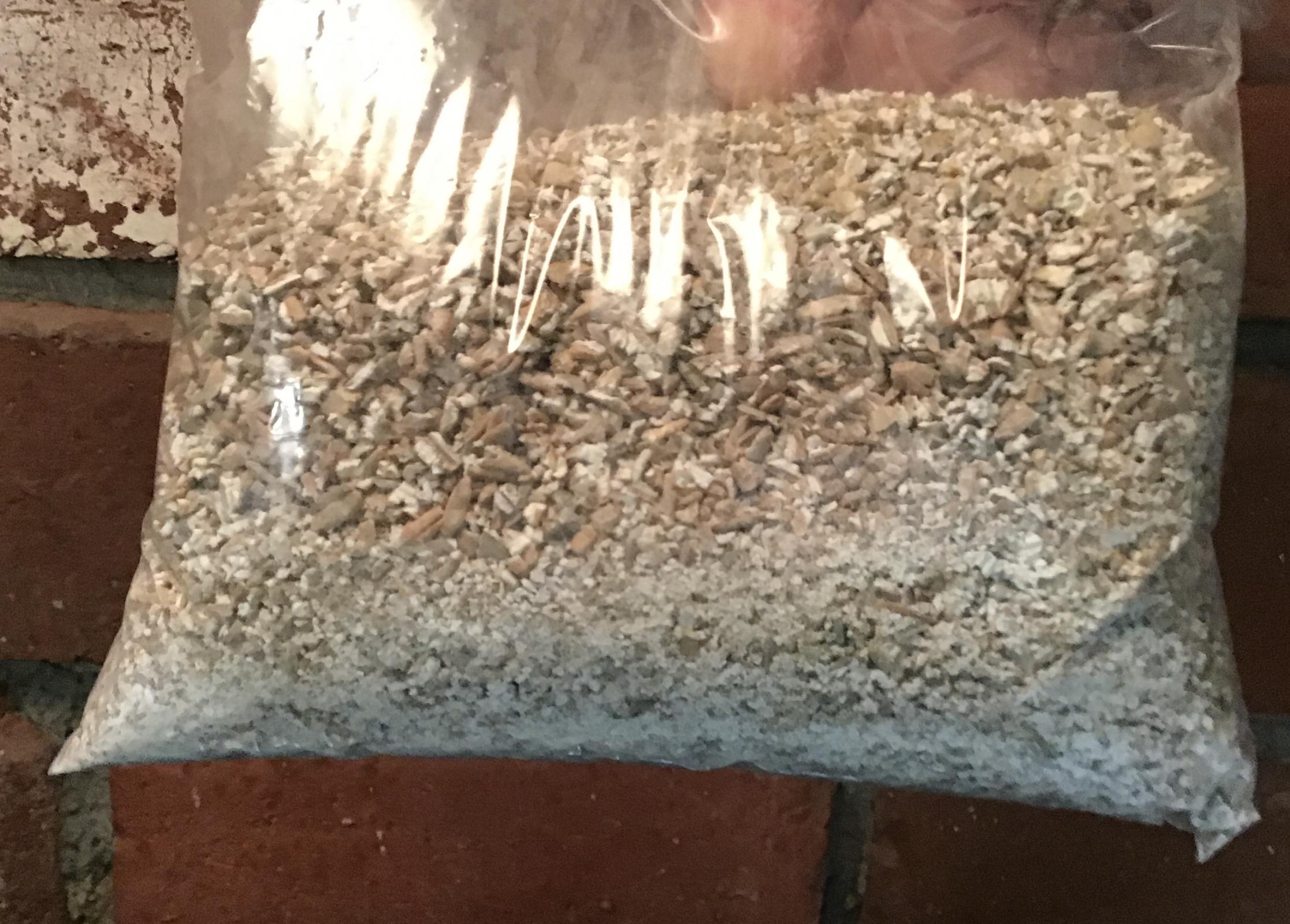
Here's the output of the 3-roller mill next to the whole kernals for size comparison:
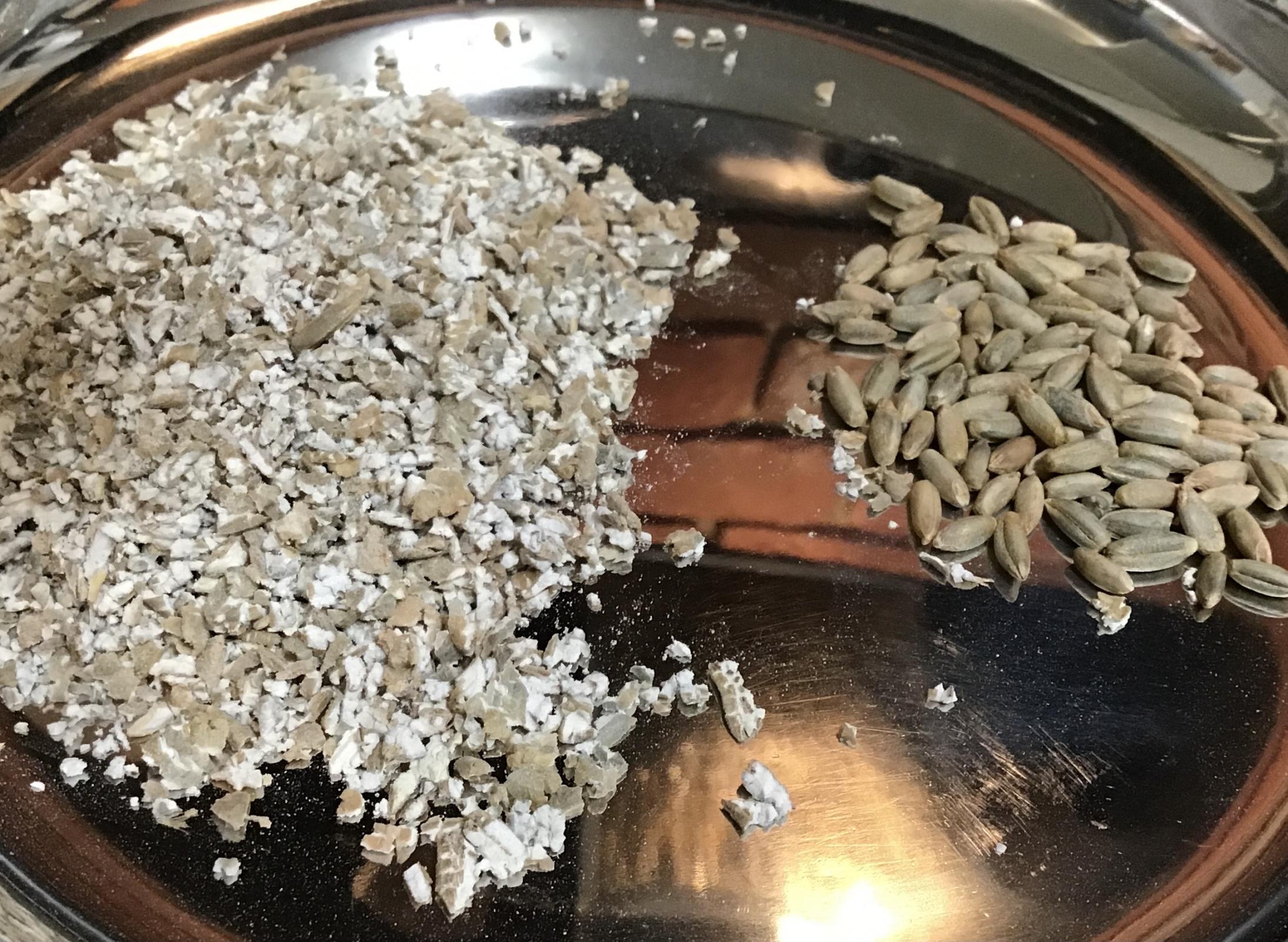
Here's what passes through a #20 seive, it has been shaken so that the larger particles float to the top:
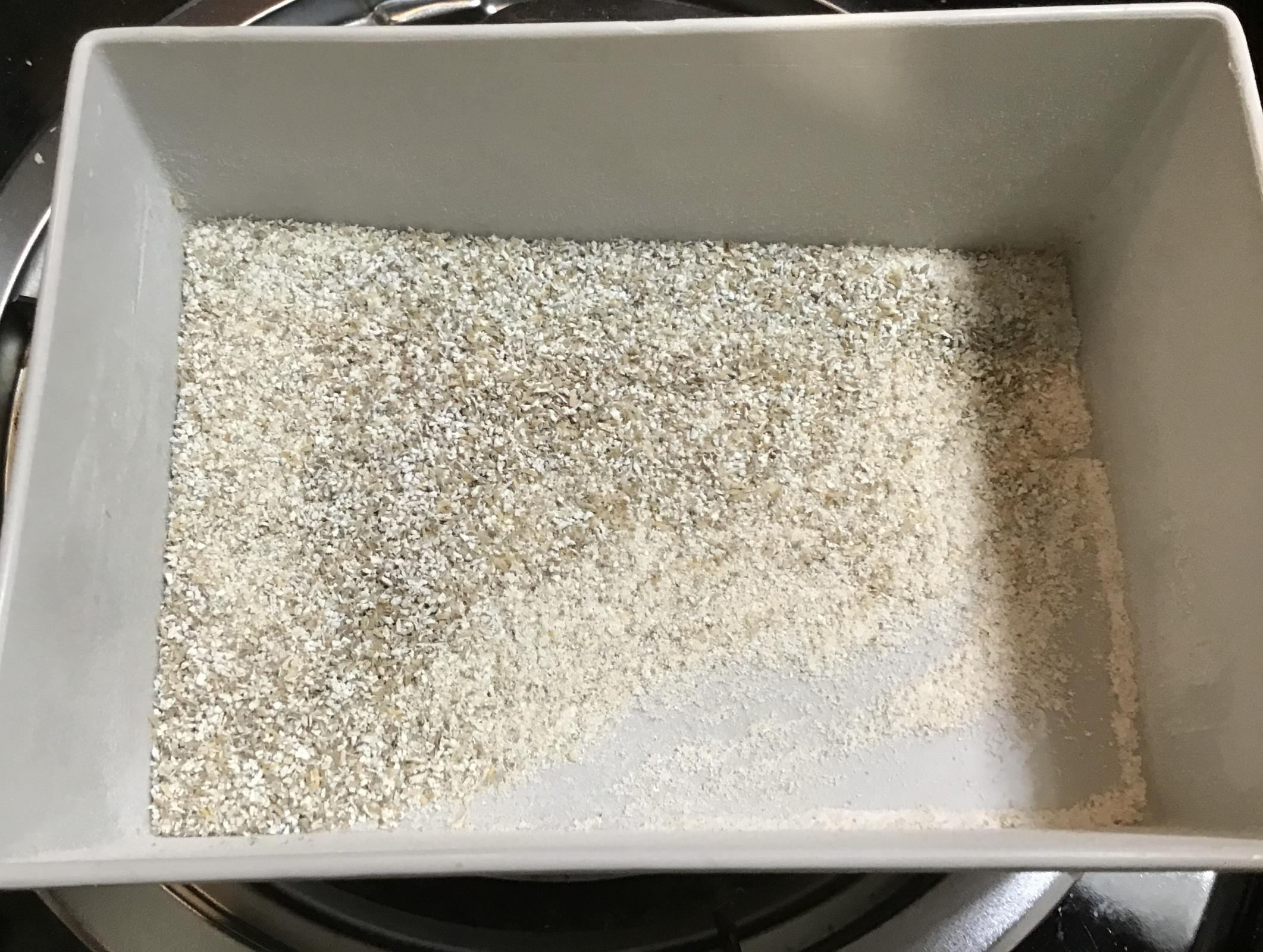
Here's a side by side comparison of what is retained in the #20 seive (on the left) with what paases through the #20 seive (on the right):
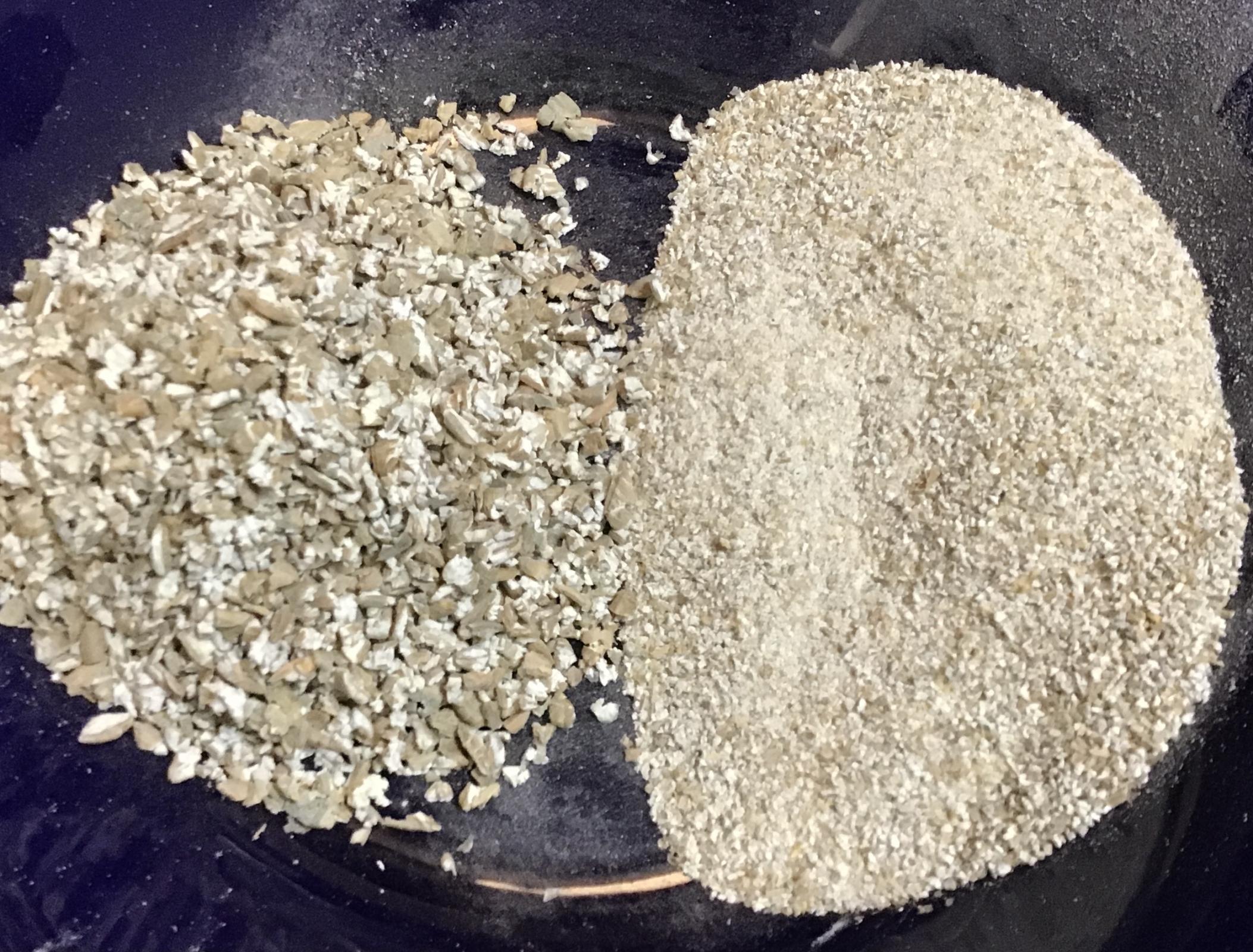
- idaveindy's Blog
- Log in or register to post comments
What mill are you using? Looks like you are playing with bolting or sifting, too. I get a similar product to what you showed in the plastic bag when I open up the gap between the stones of my KoMo mill. So far, I just run with that as is for breads that call for cracked or chopped grains.
Paul
Thanks for dropping in.
I added more text and links in the OP. (I wish there were a "save as draft" feature so we wouldn't have to "go live" to save our work.)
Yesterday, I ran 7 pounds of berries through the Shule, which I like to call a "grain cracker" rather than a mill. 2 pounds of rye, from the bag that I took delivery of earlier this month. And the 3 pounds of Prairie Gold HWSW, and 2 pounds of generic/commodity HRWW, that has been sitting in baggies in the fridge for 15 months.
I weigh out 8 ounces, 224 grams, of berries into each zipper seal bag, so there were 14 bags total. There are two reasons for this:
1) The Vitamix blender seems to work best with 8 oz of grain. Too little and the blades don't "bite". Too much and the grain doesn't circulate enough and it over-heats. I'm using regular blades/container, not the "dry grains" blades/container.
2) As home-millers know, the larger particles rise up (float) in a container, and the smaller particles sink to the bottom.
Edited to add: // And the Vitamix blender leaves me with a kind of wide range of particle sizes. There is a little grit that doesn't get broken down unless I run the blender to the point of heating the flour more than I want to. So I live with the variable size "grit" and the smallish baggies of 8 oz flour spreads it out, so it doesn't all end up in the first bake of the batch.//
If I put a batch of 2 or more pounds in one bag/container, then the flour I finish baking with at the bottom is going to be different than the flour I start with at the top. Since I use at least 8 oz/224 g of flour per bake, I think this arrangement affords more bake-to-bake consistency. And I can easily shake a 1/2 pound bag to even things out when using a partial bag.
--
Anyway, the 8 oz capacity limit of the Vitamix is the main thing, so I'm just keeping the bags throughout the process. I also chill the 8 oz bags of "cracked" grain in the fridge before running it through the Vitamix in order to counter-balance the heating effect of the Vitamix.
--
Due to the logistics of a small kitchen, scarce counter-space, etc., I have to: take the equipment out, set it up, use, take down, clean it, put it away, then clean up the spattered cracked grain and flour dust, ... which is a rigamarole and chore (that would be greatly reduced if I bought an electric mill, and made a permanent space for it on the counter.
So with all that, I try to "mill" (I use the term loosely) at least 5 pounds (total of all grains) per session. Meh.... it works for me. If I were baking for a family. I'd get an electric mill, or one of the high-end hand-cranks jobs, such as the Grain Maker.
You are a determined man, Paul.
My wife has, on occasion, suggested that I do the milling at my workbench in the garage. Oddly enough, I think each of those occasions has been after I milled rye. That dust drifts everywhere…
Although I’ve gotten better at containing the fugitive dust, the thought of screening or sifting and the potential for even more dust getting loose has put me off that endeavor. That, and I tilt more toward inspired laziness than toward dogged procedural purity.
If the stars align someday, take the plunge for the mill of your desires. I got mine used from someone who posted it for sale here on TFL. The price reduction, compared to new, was enough to tip me from “maybe someday” to “let’s buy it now”.
Paul